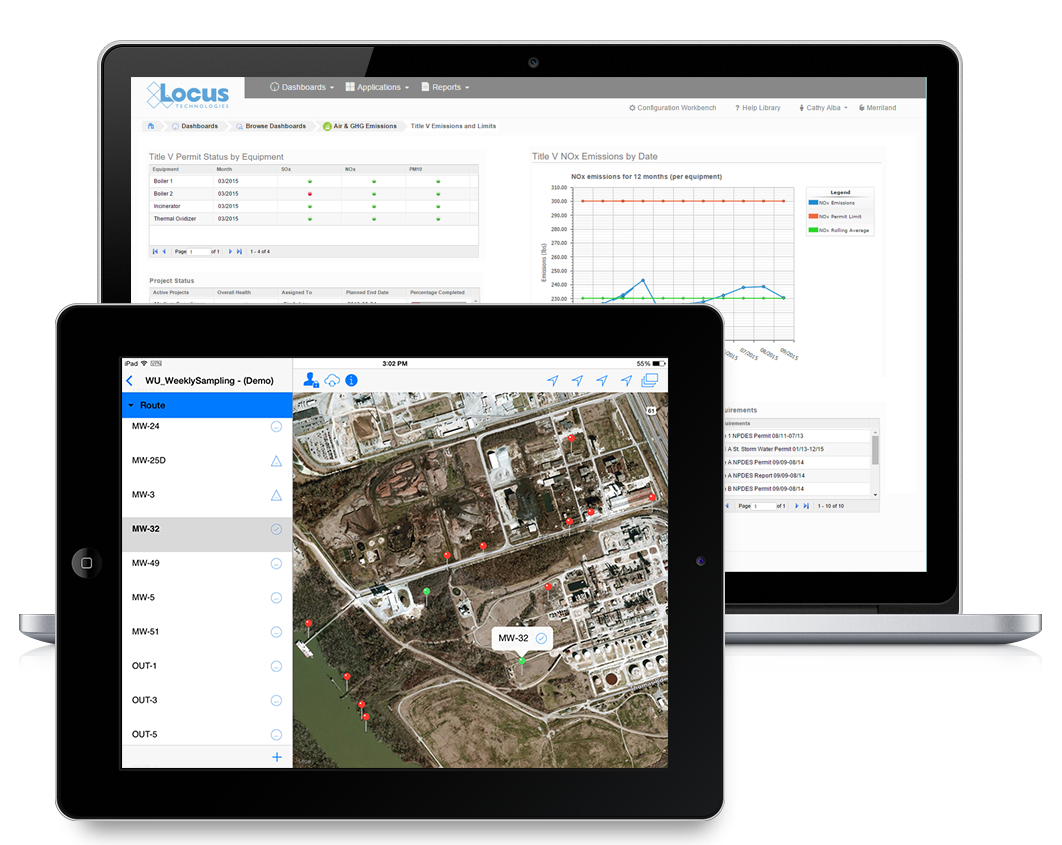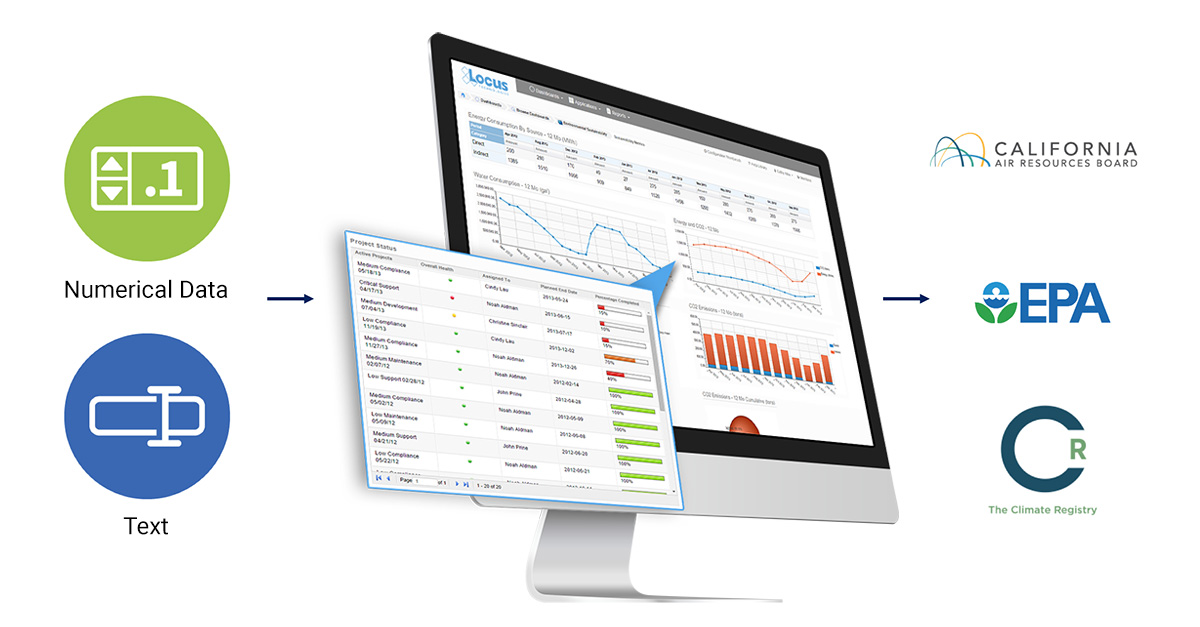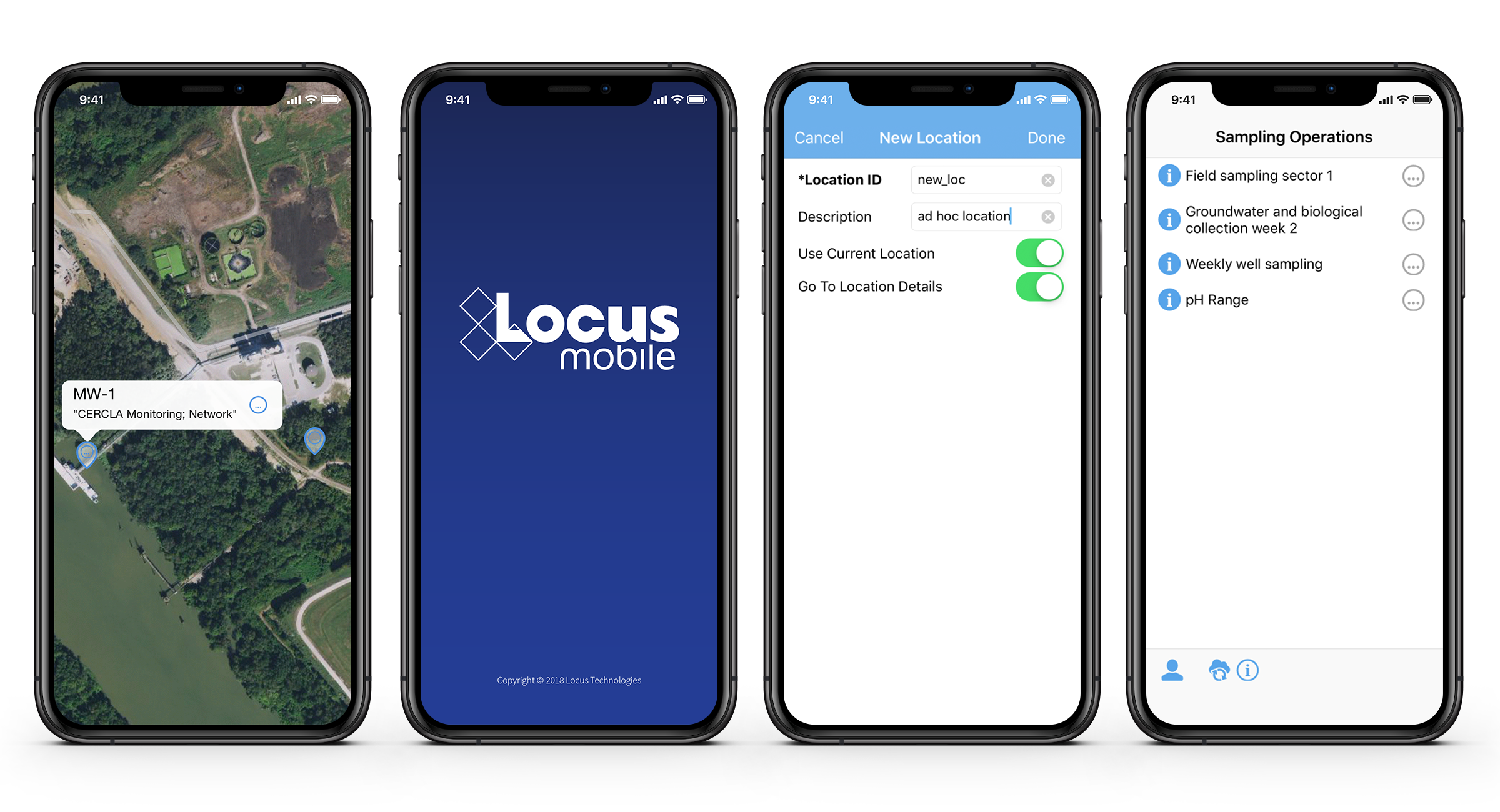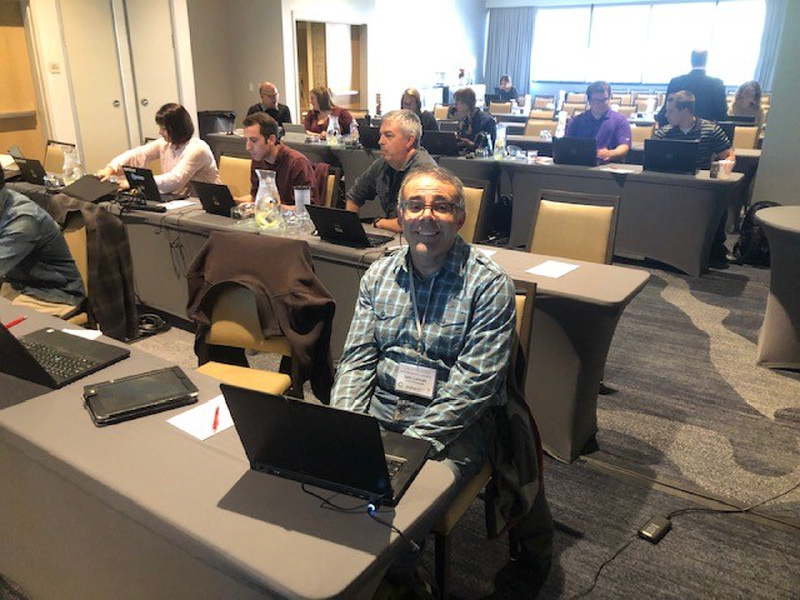Cap-and-trade compliance deadlines
The deadline to transfer sufficient compliance allowances into your account to meet your compliance obligation.
The deadline to transfer sufficient compliance allowances into your account to meet your compliance obligation.
Time management is an ever-present struggle. With expanding air quality monitoring and regulatory programs, more is expected from air quality professionals without compromising work quality. Locus Technologies offers the tools to ease your workload. Here’s how Locus transforms your air quality data and reporting management:
Integration can save you a great deal of time and stress with the most cumbersome air quality data management duties. Our air quality software has a unique point and click integration application enabling connection with major databases and third-party systems that have open API (access privileges). Some integration, database, and communication standards and methods that are supported include OLE compliance, SOAP, COM, Java, XML, web services, DBC/ODMA/SQL/Oracle, AWS, VIM, and MAPI.
Locus also provides a powerful two-way synchronization with MS Excel, allowing users to download to Excel, then work, edit, verify, or append data on their local copy of Excel. Any revisions they perform to the downloaded data can be automatically synchronized back to the Locus Platform application. During the process, a complete audit trail will be preserved. This is a great time saver, especially if you are sending large volumes of valid values in a database or if you are migrating any historical data.
Your air quality data management software should have built-in dashboards to meet your needs. With other software providers, when you need a new report, chart, or other visualization of your air quality data, it usually incurs a custom software development charge. Locus allows you to assemble the information you want in your chosen format (bar or line charts, maps, tables, treemaps, diagrams, etc.) and share your custom dashboards and real-time information/data with your team or regulators without the fees. In addition, the views and dashboards export to Excel, so you can easily integrate with commonly used tools and further mine the data.

With Locus, powerful dashboards will help you understand the status of single of multiple facilities in an air quality program based on a matrix you design. With the the flexibility of Locus, facility information can be automatically populated based on the user credentials, saving you and your team time and frustration.
Locus Platform’s air quality application and calculation engine supports simultaneous calculations using multiple methods for various reporting programs including EPA, State, or Local, CDP, TCR, DJSI, Title V, e, and others. Our software also assists in streamlining your emissions tracking and reporting requirements for programs such as GHG, Fenceline, Title V, and LCFS. Locus air quality software is fully integrated with our compliance/asset management and remote sensing systems, making digital transformation more efficient. In addition, Locus’ vapor intrusion and indoor air management application will easily organize, manage, and report indoor air and vapor intrusion data.

This allows users to input data only once and utilize it to report to multiple federal, state, and voluntary reporting programs, according to your required format. The application will also support direct electronic reporting formats for many reporting programs, so that additional manual transcription and submittal of data are no longer necessary. This is a very powerful tool and a huge advantage to customers in terms of improving efficiency, while reducing costs.
Locus’ Mobile application allows you to sync with your server to create in-field data collection profiles on a mobile device, whether it’s your phone or a tablet. It will allow you to click through and enter field inspection data on the device even when you are offline. Air quality field operations data validation is performed in real-time and is stored locally on the device when you are out of service range, with data will automatically being updated in Locus’ cloud when you have connection.

Locus gives the benefits of data entry directly on the mobile device, with immediate data availability on the cloud when you reach an internet signal. Other advantages of using Locus Mobile includes location metadata and mapping integration, bar-code/OR code scanning, voice recognition, and form customization.
To alleviate the effort in researching complex air emissions calculations ranging from GHG to Tank emissions, Locus has designed a Java Library, Curta, for complicated scientific computing on our software. Curta contains a collection of built-in functionality, unit conversions, periodic and hierarchical calculations that can be used to solve mathematical models of problems in Science and Engineering.
Curta can be used directly as API (Application Program Interface) in the UI (User Interface) design, or implicitly combined with the Locus Platform Sustainability application with clear break down into calculation indicators and sources. It offers an integrated solution to work with different data types, continuously changing inputs and large set of unknown variables.
Curta features include:
Last week Locus attended the first training session offered by California Air Resources Board (CARB) for verifiers under the California Low Carbon Fuel Standard (LCFS) program. The California LCFS program has been ramping up over the past several years, and is now ready to start certifying third-party verifiers to review both applications and routine reporting.
The LCFS program is part of California’s initiative to meet the AB32 requirements of reducing overall greenhouse gas emissions to 1990 levels by 2020, and 40% lower than that level by 2030. LCFS is specifically intended to address emissions from transportation fuels in California, which are approximately half of the overall emissions statewide. Like the Greenhouse Gas Mandatory Reporting Rule and Cap-and-Trade programs that preceded it, the California LCFS program uses a market-based approach to incentivize innovation and new approaches to reduce emissions.

Seth Lalonde, Locus Environmental Scientist, at the California Air Resources Board Training
The program covers a wide variety of projects, including production of alternative fuels (e.g. renewable diesel and biogenic compressed natural gas), innovative approaches to fossil fuel production and refining, and direct carbon capture and sequestration. Fuels are assigned a carbon intensity based on overall carbon dioxide emissions over the entire life cycle, from production to processing to shipping to consumption. The carbon intensity is essentially a measure of the emissions from the fuel per unit of energy. The lower the carbon intensity value, the less impact the fuel has in terms of carbon emissions. Certain fuels can even have a negative carbon intensity, which essentially means the fuel production process is absorbing more carbon than is eventually emitted to the atmosphere (such is the case for compressed or liquefied natural gas produced using biomethane from manure collection). The program also has impacts well outside the California border. After all, fuel that is eventually used in California can originate anywhere in the world, and the LCFS program allows for these projects to obtain credits regardless of their location.
Unsurprisingly, California was the first state to adopt and implement a LCFS program, and the first to establish a third-party verification program specific for LCFS. Although it was clearly the first presentation of this training material, staff from CARB as well as the Climate Action Reserve and The Climate Registry were on hand to assist in addressing questions and topics that weren’t covered in the prepared materials. And considering the wide variety of LCFS project types and the disparate backgrounds of attendees for the verification training, they did a great job of getting everyone all the information they needed to understand and verify these projects.
First and foremost, like any market-based emission program that includes a verification or auditing requirement, transparency is critical. The verifiers are trained to dig deep into your data, and not to take ‘no’ for an answer. Be prepared to have your metadata and documentation assembled and easily made available to the verifier. (For more on Transparency in Reporting, view this webinar)
Second, the LCFS program includes requirements for continuous or near-continuous monitoring for many parameters, and instrumentation capable of electronic data archival. Manual data records and transcription are still acceptable under other carbon offset programs, but under LCFS these options are no longer allowed. Be sure that your instrumentation is consistent with the specific LCFS requirements, or you’ll be seeing a non-conformance from your verifier.
There were many other tips and common pitfalls highlighted during the training for specific LCFS project types. Overall, I’m very excited to see how the LCFS program evolves in California, and how the energy industry takes advantage of these incentives to provide new options for transportation fuels that will reduce carbon emissions.
Update: Locus is now an approved verification body for the Low Carbon Fuel Standard. Learn more here.
MOUNTAIN VIEW, Calif., 27 January 2020
Locus Technologies, (Locus), industry leader in water quality, EHS, sustainability, and compliance management software, is pleased to announce they are among the first accredited verification bodies for the Low Carbon Fuel Standard (LCFS) program administered by the California Air Resources Board (CARB). Locus verifiers were accredited for fuel pathway applications, alternative fuel transactions, and petroleum-based fuel reports.
Originally adopted in 2009, the goal of the LCFS program is to reduce the carbon intensity (CI) of the transportation fuel pool. The LCFS is one of the key AB 32 measures to reduce greenhouse gas emissions in California, while reducing petroleum dependency and achieving improved air quality. The program has grown in scope, and certified third-party verifiers can now review both applications and routine reporting.
Locus Technologies has been a certified third-party reviewer of GHG verifications for CARB since 2010 under the Mandatory Reporting Rule and maintains an unmatched track record. Not one of over 500 GHG verifications by Locus has been overturned, a standard the company intends to match with LCFS reporting.
Locus has staff and expertise to review Tier 1 fuel pathway applications and annual reports under LCFS as well as other LCFS projects, with verifiers located in San Francisco, San Jose, Sacramento, Los Angeles, and in the Midwest. Locus also offers software products designed to assist reporters in complying with the LCFS program.
299 Fairchild Drive
Mountain View, CA 94043
P: +1 (650) 960-1640
F: +1 (415) 360-5889
Locus Technologies provides cloud-based environmental software and mobile solutions for EHS, sustainability management, GHG reporting, water quality management, risk management, and analytical, geologic, and ecologic environmental data management.
